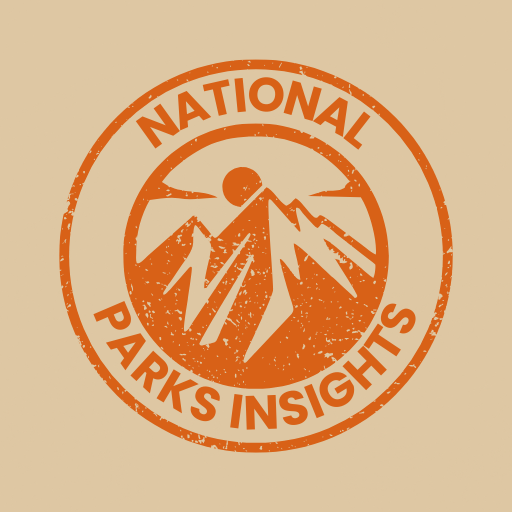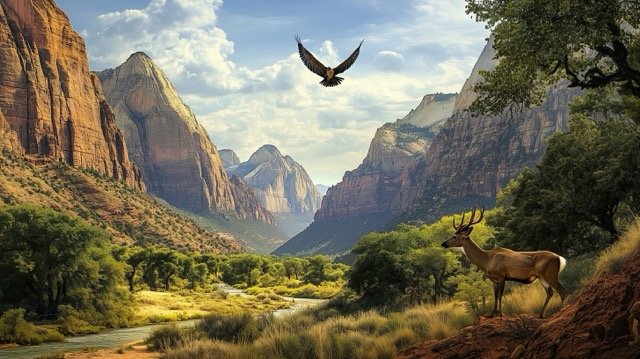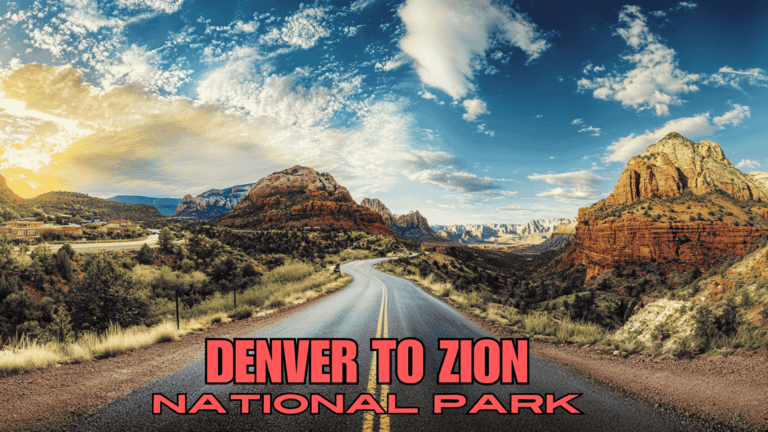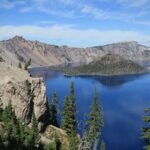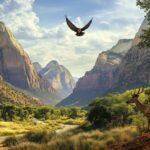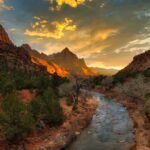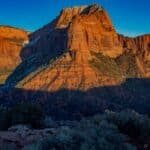Wildlife in Zion National Park
Zion National Park is not just a wonder of natural beauty but also home to diverse wildlife. From majestic mule deer to elusive mountain lions, the park offers a haven for animal lovers seeking to explore the fascinating wildlife in Zion National Park.
What Wildlife is in Zion National Park?
Zion National Park is a wildlife lover’s paradise, with its diverse ecosystems supporting a variety of animals. Whether you’re a fan of mammals, birds, reptiles, or amphibians, Zion has something for everyone to discover.
Key Species of Wildlife in Zion National Park

Zion National Park is home to over 78 species of mammals, giving you plenty of chances to see some amazing animals. During the day, you might spot mule deer and rock squirrels. If you’re up for a night adventure, you might catch a glimpse of coyotes, gray foxes, and ringtail cats.
September is one of the best months to visit Zion National Park for wildlife lovers. As summer transitions to fall, cooler temperatures make it easier to spot animals that are typically more active in the early mornings and late evenings. This is also the start of the fall foliage, adding an extra layer of beauty to wildlife viewing. The variety of wildlife you can see includes mule deer, bighorn sheep, and even the elusive ringtail cat, especially in the early morning hours (Zion Ponderosa Resort)(Day Trip Nomad).
| Mammal | Common Sightings |
|---|---|
| Mule Deer | Daytime |
| Rock Squirrel | Daytime |
| Coyote | Nighttime |
| Gray Fox | Nighttime |
| Ringtail Cat | Nighttime |
For those who love a bit of excitement, keep an eye out for cougars. These big cats are tricky to spot, but just knowing they’re around adds a bit of thrill to your trip. Remember to keep a safe distance to protect both you and the animals.
Birds to Watch For
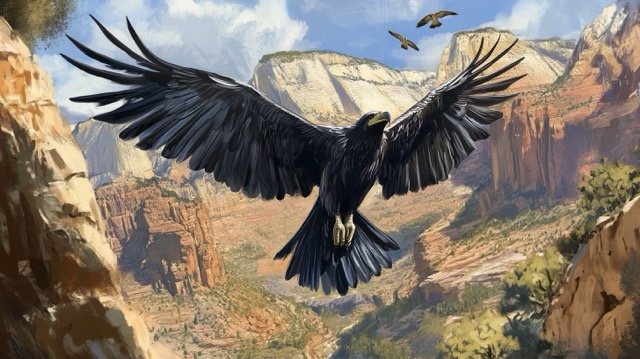
Bird watching in Zion National Park is a treat. The park is home to over 250 species of birds, from the impressive California Condor to the tiny canyon wren. The California Condor, with a wingspan of up to 9.5 feet, is one of the largest flying birds in North America and can often be seen soaring high above the cliffs.
The fall migration season in Zion National Park brings more opportunities for bird watchers to spot rare species. Notably, the California Condor is more likely to be seen soaring over the cliffs during this time. The Peregrine Falcon, one of the fastest birds in the world, also remains active during the cooler months, making September a fantastic time for birdwatching (Zion Ponderosa Resort)(Zion Ponderosa Resort).
| Bird Species | Key Features |
|---|---|
| California Condor | Wingspan up to 9.5 feet |
| Canyon Wren | Known for its unique song |
| Peregrine Falcon | Fastest bird in the world |
| Western Tanager | Brightly colored feathers |
| American Kestrel | Small but fierce raptor |
Whether you’re a bird-watching pro or just curious, Zion has plenty of birds to keep you entertained. Don’t forget your binoculars and a bird guide to help you identify the different species. For more tips on hiking trails in Zion National Park where you might spot these birds, check out our trail guide.
Exploring the wildlife in Zion National Park makes your visit extra special. From mammals to birds, the park’s variety of life makes every moment in Zion unforgettable. For more info on the best time to visit Zion National Park to see the most wildlife, check out our seasonal guide.
Click here to check exciting stays at Zion National Park
Reptiles and Amphibians
Zion National Park is a haven for reptile and amphibian lovers, boasting 37 different species despite its dry conditions. Discovering these creatures can be a highlight of your visit.
Common Reptiles
As you roam Zion, you might bump into some of its reptilian residents. These critters are perfectly suited to the park’s varied habitats and play a vital role in keeping the ecosystem balanced.
| Reptile Species | Description |
|---|---|
| Desert Tortoise | A federally protected species that can live for 80 to 100 years. |
| Western Rattlesnake | Known for its distinctive rattle and venomous bite. |
| Common Chuckwalla | A large lizard that thrives in rocky areas. |
The desert tortoise stands out with its impressive lifespan and protected status. Keep your eyes peeled for these amazing reptiles while hiking the trails in Zion National Park.
As temperatures cool in Zion, reptiles like the Desert Tortoise become more visible during the day, offering a rare opportunity for visitors to spot this protected species. Additionally, September is a great time for seeing Western Rattlesnakes basking on rocks or Common Chuckwallas thriving in the park’s rocky environments (Zion Ponderosa Resort).
Amphibians in Zion
Amphibians in Zion National Park add to the rich tapestry of wildlife. These creatures are primarily found near water sources and exhibit fascinating behaviors.
| Amphibian Species | Description |
|---|---|
| Red-spotted Toad | Often seen near streams and ponds. |
| Canyon Treefrog | Notable for its ability to blend into rocky environments. |
| Tiger Salamander | Known for its striking appearance and nocturnal habits. |
The amphibians in Zion are a testament to the park’s ecological diversity. Their presence near water bodies provides excellent opportunities for wildlife observation, especially during the spring when they are most active. For more details on the best seasons for wildlife viewing, visit our best time to visit Zion National Park guide.
Exploring the reptiles and amphibians of Zion National Park offers a unique glimpse into the complex and vibrant ecosystem of this beautiful area. Whether you’re camping in Zion or just visiting for the day, keeping an eye out for these fascinating creatures can enhance your experience.
Fish in Zion
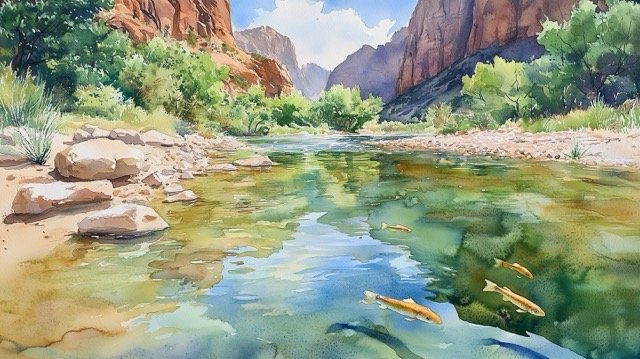
Exploring the fish in Zion National Park is like diving into a hidden treasure chest of aquatic life. With eight different species swimming around, you’ll be amazed at the variety of fish that call this place home.
Fish Species
Zion National Park is a fish lover’s paradise with eight unique species. The rivers and streams here are bustling with both native and non-native fish, each adding their own flavor to the park’s ecosystem. Whether you’re a fishing fanatic or just love nature, getting to know these fish will make your visit even more special.
| Fish Species | Common Name | Notes |
|---|---|---|
| Gila cypha | Humpback Chub | Native, endangered |
| Lepidomeda mollispinis | Virgin River Spinedace | Native, unique to Virgin River |
| Rhinichthys osculus | Speckled Dace | Native, common |
| Catostomus clarkii | Desert Sucker | Native, common |
| Cyprinella lutrensis | Red Shiner | Non-native, introduced |
| Oncorhynchus mykiss | Rainbow Trout | Non-native, popular among anglers |
| Salmo trutta | Brown Trout | Non-native, introduced |
| Ptychocheilus lucius | Colorado Pikeminnow | Native, endangered |
Unique River Fish
Three of these fish are like the VIPs of the Virgin River. The Virgin River Spinedace, Humpback Chub, and Speckled Dace are all native to this river, making them extra special. Their presence highlights how important it is to keep Zion’s water habitats healthy and thriving.
The Virgin River Spinedace is a real gem, found only in this river system. Protecting the Virgin River’s delicate ecosystem is key to keeping these unique fish around for future generations.
If you’re planning to soak up more of Zion’s wonders, why not make a weekend of it? Try camping in Zion National Park to extend your stay, or hit the hiking trails in Zion National Park to fully dive into the park’s beauty. For smooth planning, check out the Zion National Park entrance fee and the best time to visit Zion National Park to make sure you have an unforgettable trip.
Insects and Their Role
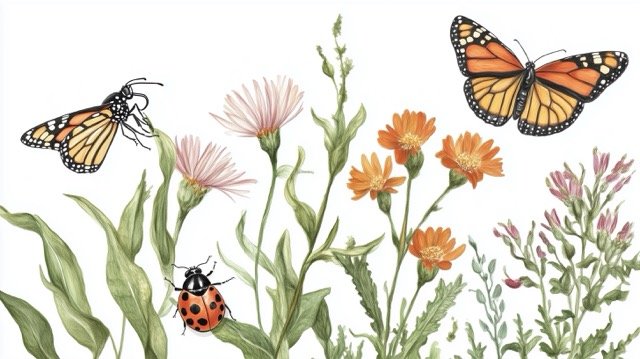
Insects are the unsung heroes of Zion National Park. Knowing their importance and spotting common species can really spice up your wildlife adventure.
Why Insects Matter
Insects are like the backstage crew of Zion National Park, making sure everything runs smoothly. Here’s how they do it:
- Pollination: Plants need bees and butterflies to help them reproduce. Without these little matchmakers, we’d be in a floral mess.
- Decomposition: Beetles and ants are nature’s cleanup crew, breaking down dead stuff and turning it into nutrients for the soil.
- Food Source: Birds, frogs, and even some mammals rely on insects for their next meal. They’re like the fast food of the animal kingdom.
Getting to know these tiny workers can make you appreciate the wildlife in Zion National Park even more.
Common Insect Species
While you’re exploring Zion, keep an eye out for these common insect species. Here’s a quick cheat sheet:
| Insect Type | Common Species | Role |
|---|---|---|
| Bees | Honeybee, Bumblebee | Pollinators |
| Butterflies | Monarch, Painted Lady | Pollinators |
| Ants | Red Harvester Ant, Carpenter Ant | Decomposers |
| Beetles | Ladybug, Stag Beetle | Decomposers |
| Dragonflies | Common Green Darner, Blue Dasher | Predators of smaller insects |
These insects aren’t just doing their jobs; they’re adding color and life to Zion’s scenery. If you’re hitting the hiking trails in Zion National Park, spotting these critters can make your trek even more interesting.
Checking out the insect life in Zion can be a cool part of your trip. Whether you’re camping in Zion National Park or just wandering around, these tiny creatures are proof of the park’s amazing biodiversity. Want to know the best times to see them? Check out our guide on the best time to visit Zion National Park.
Best Times to Visit Zion National Park
Planning a trip to Zion National Park? Timing is key if you want to catch the park’s amazing wildlife in action. The best times to visit are during spring and fall when the park is buzzing with life.
Spring Wildlife
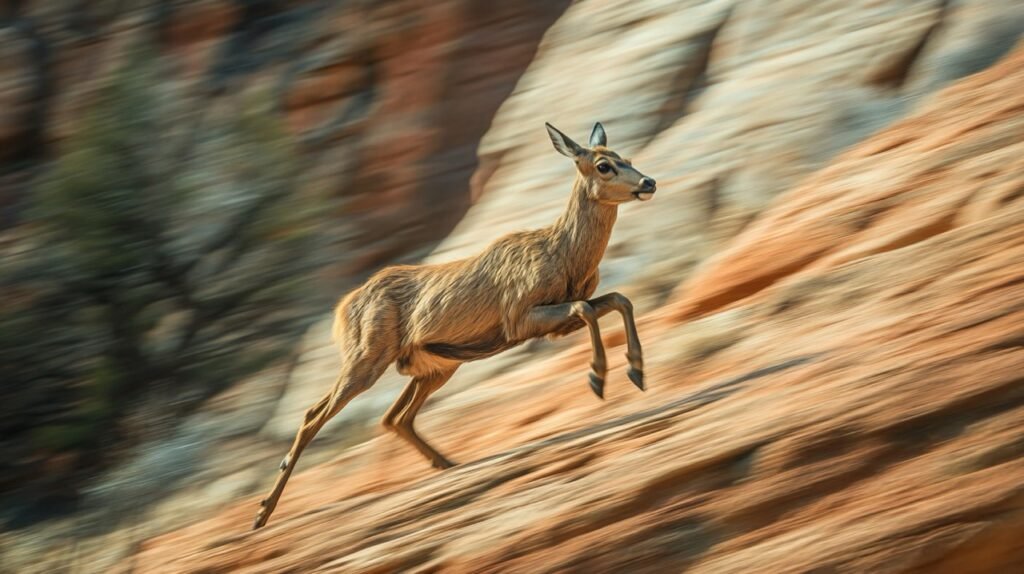
Spring is a top-notch season for spotting wildlife in Zion. As the weather warms up, animals get more active. This is your chance to see a variety of critters in their natural settings. Mule deer are often seen munching in meadows, while rock squirrels dart around during the day.
Birdwatchers, rejoice! Spring is also prime time for birdwatching. With over 20,000 wild turkeys strutting their stuff, you’re bound to see a few. Zion is also home to over 500 bighorn sheep, often seen navigating the rocky cliffs.
| Wildlife | Estimated Population |
|---|---|
| Mule Deer | High |
| Rock Squirrels | High |
| Bighorn Sheep | 500+ |
| Wild Turkeys | 20,000+ |
For a detailed guide on where to hike and spot these animals, check out our section on hiking trails in Zion National Park.
Fall Wildlife
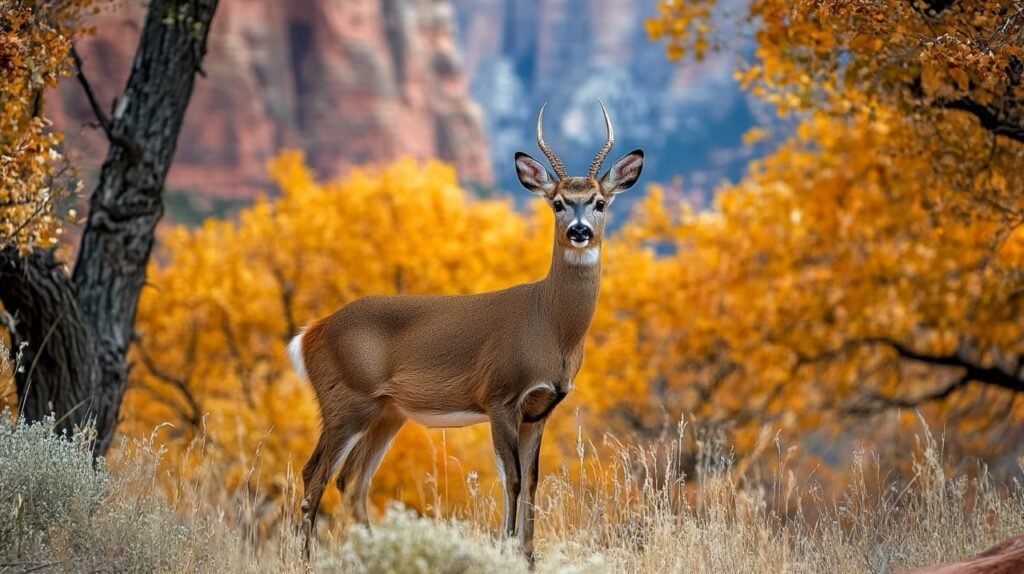
Fall is another fantastic time to explore Zion’s wildlife. The cooler temps make it perfect for animals to be out and about all day. You might even spot nocturnal animals like coyotes, gray foxes, and ringtail cats during the early morning or late evening.
The fall colors add a stunning backdrop to your wildlife adventure. This season is especially good for seeing birds and mammals getting ready for winter. Bighorn sheep and deer are more active as they forage to bulk up for the cold months.
| Wildlife | Active Times |
|---|---|
| Coyotes | Night/Early Morning |
| Gray Foxes | Night/Early Morning |
| Ringtail Cats | Night |
| Bighorn Sheep | Day |
Planning to camp and extend your stay? More info can be found in our guide on camping in Zion National Park.
By visiting Zion during these peak seasons, you’re in for an unforgettable wildlife experience. Always keep a safe distance from the animals and respect their space. For more tips and detailed info, explore our additional resources.
Click here to check exciting stays at Zion National Park
Best Wildlife Viewing Spots in Zion National Park
Zion National Park is a treasure trove for wildlife enthusiasts. To make the most of your visit and keep both you and the animals safe, here are some handy tips.
Keep Your Distance
Getting too close to wildlife can be dangerous for both you and the animals. Here’s a quick guide on how far you should stay:
| Wildlife Type | Safe Distance |
|---|---|
| Big Animals (Deer, Bighorn Sheep, Mountain Lions, California Condors) | At least 100 feet (30 meters) |
| Smaller Critters (Squirrels, Birds, Reptiles) | At least 50 feet (15 meters) |
- Don’t feed the animals: Feeding wildlife can mess with their natural habits and make them dependent on humans. Even if they seem friendly, resist the urge to feed them.
- Stay chill: Loud noises and sudden movements can scare animals away or make them aggressive. Keep it cool and quiet.
For more tips on enjoying the park safely, check out our guide on camping in Zion National Park.
September marks the end of Zion’s monsoon season, so it’s essential to be cautious of flash floods while hiking and wildlife viewing. Always check for flash flood warnings, especially if you’re near rivers or canyons where animals like bighorn sheep and mule deer are often spotted (Wildland Trekking).
Snap the Perfect Shot
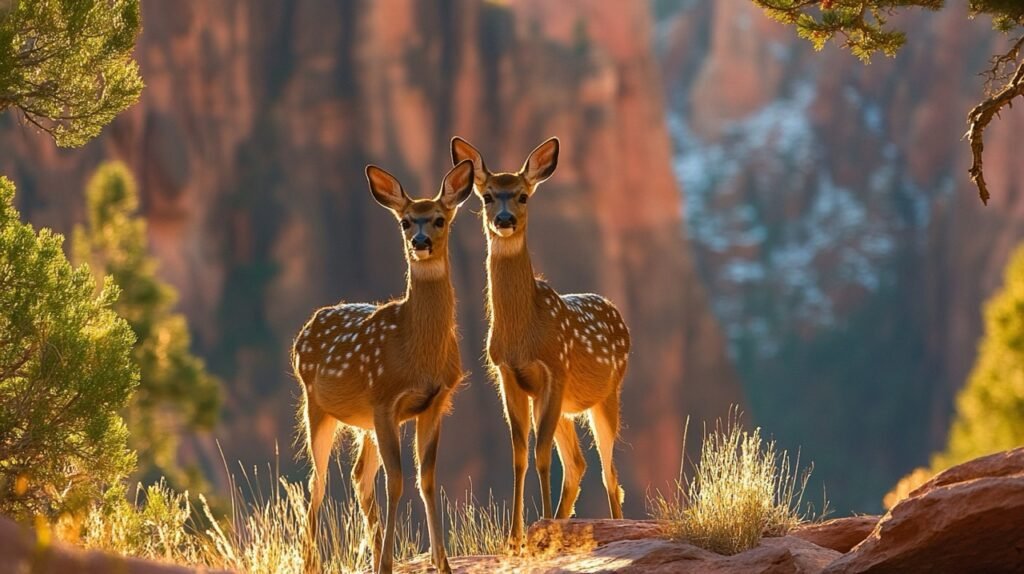
Want to capture the magic of Zion’s wildlife? Here’s how to get those Instagram-worthy shots without disturbing the animals:
- Zoom in: Use a zoom or telephoto lens to get close-up shots without actually getting close.
- Be patient: Sometimes, the best shots come to those who wait. Sit back, relax, and let the animals come to you.
- Natural is best: Snap photos of animals doing their thing naturally. Don’t try to get their attention or make them pose.
- Respect the habitat: Be mindful of where you step and set up your gear. Don’t trample plants or disrupt the environment.
For more info on when to catch the best wildlife action, check out our article on the best time to visit Zion National Park.
By following these tips, you’ll have a blast watching wildlife in Zion National Park while keeping the park’s natural beauty intact. Enjoy your adventure!
Latest Updates (As of September 2024)
Zion National Park continues to be a hotspot for wildlife and visitor activity, with several key updates relevant for those planning a visit:
- Bighorn Sheep Population Management: Zion National Park, along with Utah’s Division of Wildlife Resources, has initiated a public review and comment period for the proposed relocation of some desert bighorn sheep to reduce the risk of disease transmission. This aims to protect the established population within Zion, ensuring long-term conservation effortsThe Wildlife Society
- Wildland Fire Activity: The Kolob Terrace Fire, which began in late July, has been contained by wildland firefighters. While the Hop Valley Trail remains closed due to fire damage, other areas of the park, including the Kolob Terrace Road, are open.
- Wildlife Viewing in September: September is an excellent time for spotting wildlife in Zion, as cooler temperatures make animals like mule deer, bighorn sheep, and a variety of bird species more active. This month also marks the end of the park’s monsoon season, reducing the risk of flash floods but still requiring caution near rivers and canyons (State-Parks, (NPS Homepage
For the latest conditions on wildlife, road closures, and fire safety, visitors are encouraged to regularly check the National Park Service website or visitor centers.
Conclusion
Whether you’re a nature enthusiast or an avid bird watcher, experiencing the diverse wildlife in Zion National Park will leave a lasting impression on any visitor.
